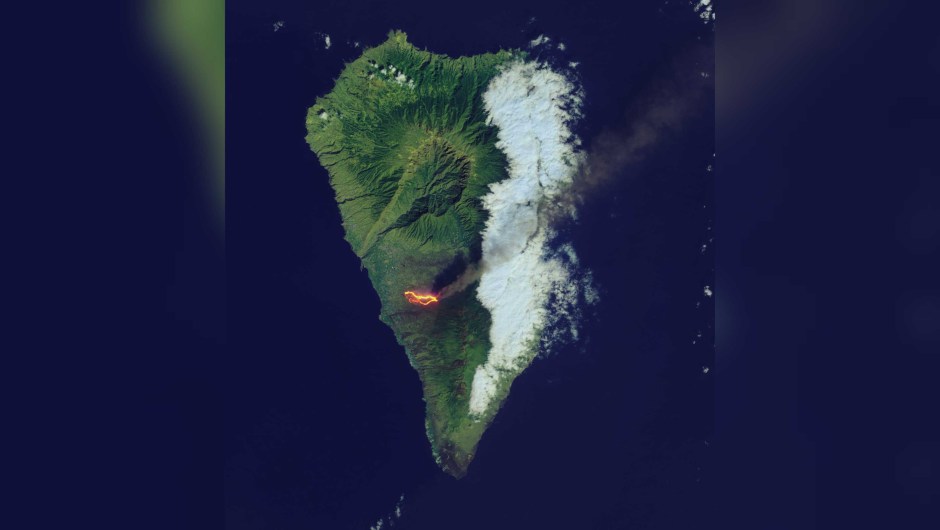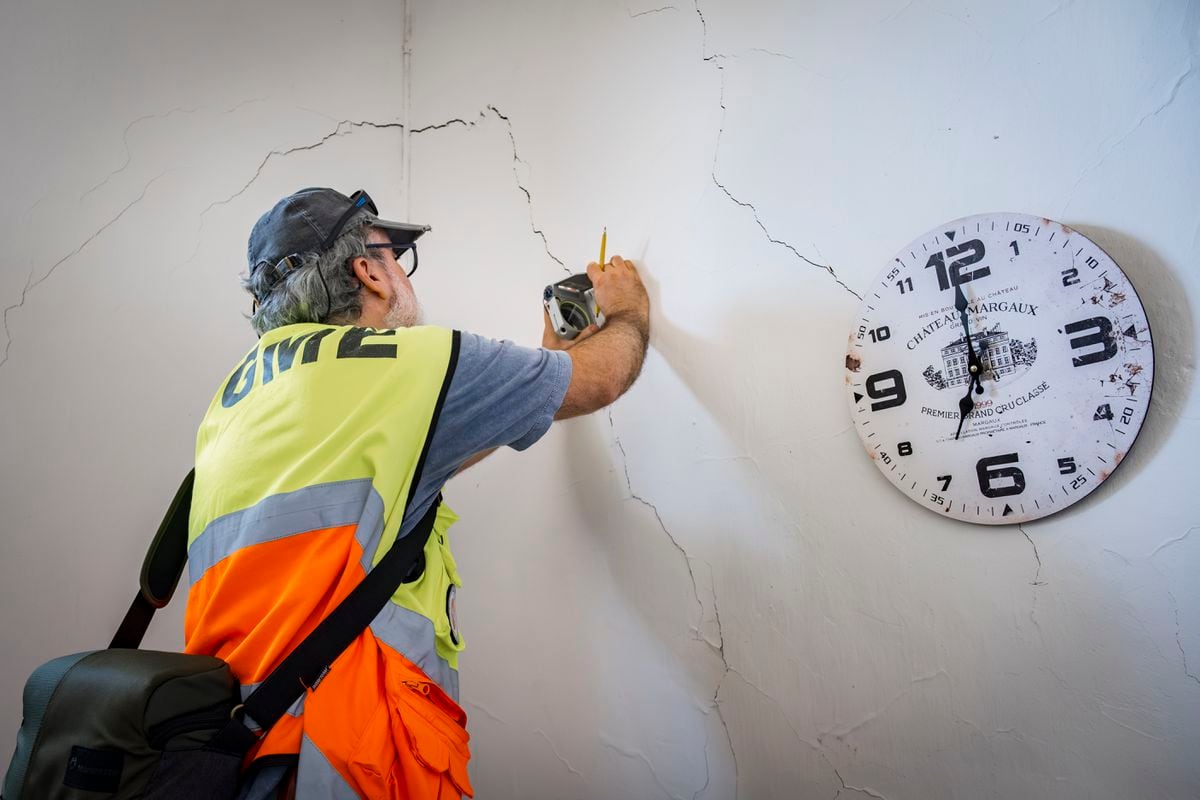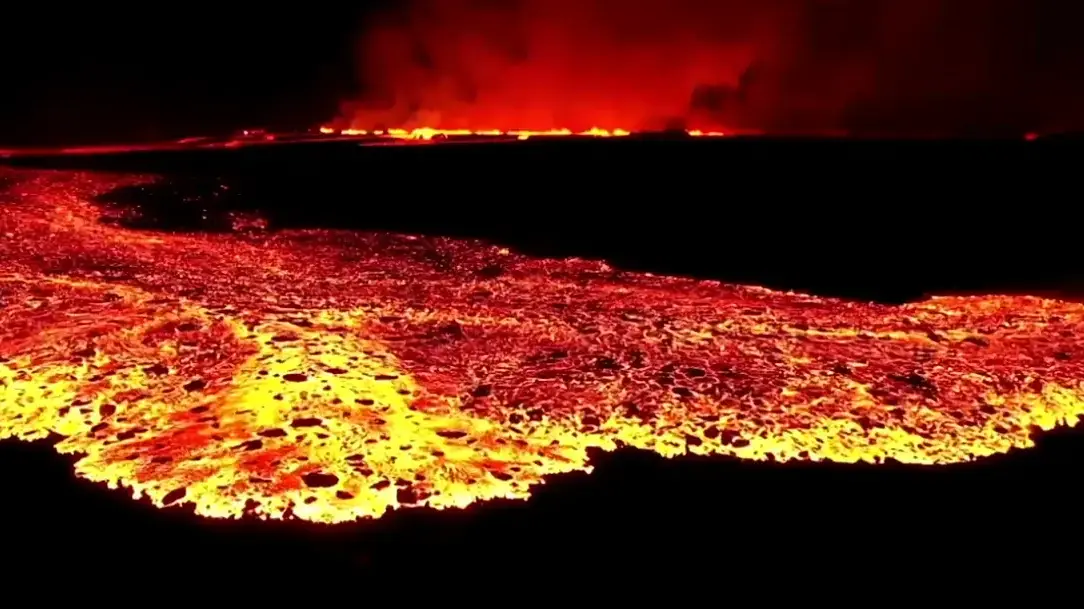Unstoppable lava rivers of Cumbre Vieja volcano 0:50
(CNN Spanish) -
The eruption of the Cumbre Vieja volcano, on the Spanish island of La Palma, marks one month this week, a period during which it has produced thousands of earthquakes, immense columns of ash and long rivers of fiery lava that have reached Sea.
In the midst of this devastation, thousands of people have had to be evacuated.
The following is the chronology of the volcano's eruption from the beginning of seismic activity to the present day.
September 11:
An "intense activity, both seismic and deformation," begins at the Cumbre Vieja volcano on the island of La Palma, Spain, according to data from the Geological and Mining Institute of Spain (IGME).
September 19:
At 14:10 (UTC) the Cumbre Vieja volcano, located in the Cabeza de Vaca area, in the municipality of El Paso, erupts.
Until the moment of the eruption, more than 22,000 earthquakes had been registered in the area.
advertising
Thus begins the evacuation of between 5,000 and 10,000 people in the affected areas, as announced by the Civil Guard cited by EFE.
1 of 10
|
The Cumbre Vieja volcano emits a column of smoke and ash after it erupts, on the Canary Island of La Palma, on September 19, 2021. Look at the most impressive images in this gallery (Photo by DESIREE MARTIN / AFP via Getty Images)
2 of 10
|
Satellite image of the lava path of the Cumbre Vieja volcano.
(Credit: NASA)
3 of 10
|
A column of smoke rises from the cooling lava in Los Llanos de Aridane, on the Canary Island of La Palma, on September 20, 2021, following the eruption of the Cumbre Vieja volcano.
(Photo: DESIREE MARTIN / AFP via Getty Images)
4 of 10
|
Lava from the Cumbre Vieja volcano flows on the island of La Palma, in the Canary Islands, on September 23, 2021. (Photo: RAMON DE LA ROCHA / POOL / AFP via Getty Images)
5 of 10
|
The Cumbre Vieja volcano erupted after several days of seismic activity, prompting the evacuation of the surrounding inhabitants, according to authorities.
(Photo: DESIREE MARTIN / AFP via Getty Images)
6 of 10
|
The location of the Cumbre Vieja volcano in the Canary Islands, Spain.
(Illustration: Edel González)
7 of 10
|
The Cumbre Vieja volcano spews a column of smoke, ash and lava.
(DESIREE MARTIN / AFP photo via Getty Images)
8 of 10
|
Cumbre Vieja is located along a ridge in the south of the island of La Palma.
(DESIREE MARTIN / AFP photo via Getty Images)
9 of 10
|
Image of lava spewing from the Cumbre Vieja volcano on the Spanish island of La Palma.
(Photo: Reuters / Jose Padron)
10 of 10
|
The last eruption of the Cumbre Vieja volcano occurred in 1971. The Spanish archipelago of the Canary Islands experienced its last eruption in 2011, that time underwater, near the island of El Hierro.
(DESIREE MARTIN / AFP photo via Getty Images)
September 20:
Lava advances at a speed of 700 meters per hour on several fronts, according to the National Geographic Institute (IGN).
September 24:
The speed of the lava is reduced to 10 meters per hour, and the eruptive column rises more than 5,000 meters above sea level.
Authorities order additional evacuations, while several flights are canceled due to rising volcanic ash.
September 27
: Residents of the eastern coast of La Palma receive the confinement order, as the lava flowing from the Cumbre Vieja volcano approaches the sea.
It is warned that the lava, 1,250 degrees Celsius, could touch the Atlantic Ocean in the next few hours, which would probably cause explosions and send clouds of toxic gases over the island, according to the Canary Islands emergency services.
The Cumbre Vieja volcano on October 4, 2021. (Credit: JORGE GUERRERO / AFP via Getty Images)
September 29:
The lava that has flowed from the volcano for 10 days finally reaches the sea after falling off a cliff in the area of Playa Nueva, near the town of Tazacorte, confirms the Institute of Volcanology of the Canary Islands through Twitter.
Authorities tell residents of La Palma's western coast to seal doors and windows with duct tape and wet towels to protect themselves from toxic gases spewed by the lava from the Cumbre Vieja volcano as it reaches the sea.
October 4:
The river of red-hot lava gushing from the Cumbre Vieja volcano thickens, after the north side of the crater collapsed the night before, causing spectacular explosions.
This is how they measure the temperature at the Cumbre Vieja volcano 0:47
The Cumbre Vieja volcano is now erupting even more aggressively after weeks of spewing lava jets, the IGN said.
The height of the eruptive column has been reduced to 4,500 meters above sea level.
October 6:
Vicente Soler, a volcanologist at the Spanish Higher Council for Scientific Research, points out on CNN Radio that "we are at the maturity of the eruption" of the Cumbre Vieja volcano on La Palma.
The specialist emphasizes that the phenomenon is "in the middle of the eruption at cruising speed", while indicating that "the most likely scenario is that the activity will continue where it is."
Eruptive column height: 3,000 meters above sea level.
New mouth alert at Cumbre Vieja volcano 0:52
October 10:
Blocks of molten lava the size of three-story buildings roll down a hillside on La Palma as a series of tremors shake the ground, three weeks after the volcanic eruption.
Eruptive column height: 3,500 meters above sea level.
October 12:
The emergency services of the Canary Islands order hundreds of people to immediately evacuate their homes on the Spanish island of La Palma, due to the proximity of a lava flow.
Eruptive column height: 3,500 meters above sea level.
This is how the lava from the volcano advances over the La Laguna neighborhood 0:38
October 13:
There are at least 6,800 evacuees and more than 1,500 buildings destroyed by the eruption of the La Palma volcano, after the new lava flow caused the evacuation of another 800 residents.
Eruptive column height: 3,000 meters above sea level.
October 15:
The Cumbre Vieja volcano presents a new mouth or crater, according to the authorities of the Volcanological Institute of the Canary Islands.
What's more.
It has expelled so much lava that specialists have called it a 'lava tsunami'.
Scattering cloud height: 4,000 meters above sea level.
October 18:
In just one day, 101 earthquakes were recorded in the area affected by the volcanic eruption, which shows growth compared to previous days, according to the IGN.
The height of the scattering cloud remains at 4,000 meters above sea level.
Cumbre ViejaLa Palma







